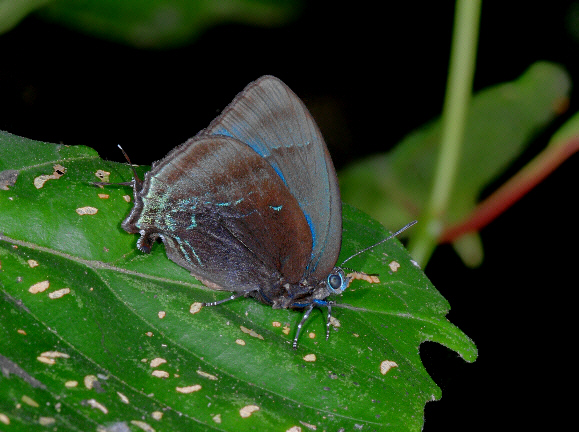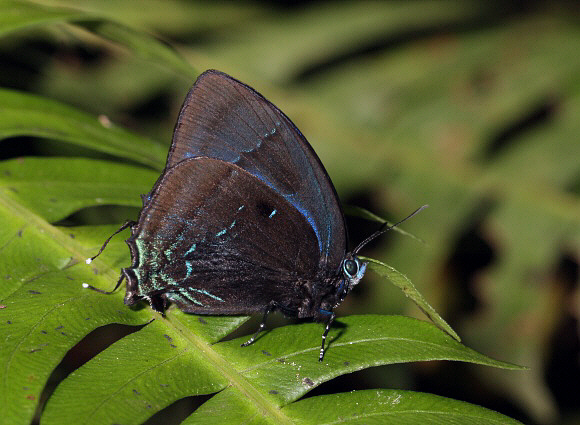
Introduction
Almost all neotropical Theclinae species are placed in the Eumaeini. The tribe is not particularly well represented in collections, so until fairly recently a high percentage remained unstudied, and were inappropriately filed away in the ‘convenience’ genus Thecla. Many taxonomists have attempted to rationalise the systematics of the Eumaeini, the most recent being Robbins who published a revision in 2004, reclassifying the taxa into 83 genera. Currently there are 1058 known species. Taking into account their small size, secretive behaviour, and the great similarities between many species, it is estimated that about another 200 species probably remain to be discovered.
The genus Theritas comprises of 26 known species, variously distributed from Mexico to Peru, Bolivia and Argentina. The males of all species have metallic blue or turquoise uppersides, and have a large patch of androconial scales in the discal cell of the forewing. In some species this patch is dark brown in colour, but in others it is partially or completely obscured by the overlying blue sheen.
In a few species such as mavors and hemon the females are earthy brown on the upperside, but the majority have a blue sheen like their male counterparts. Both sexes of all species have a long thin tail projecting at an angle from the tornus of the hindwing at vein 2. Several species including mavors, hemon and drucei also have a shorter tail projecting from vein 3, although this is so thin and fragile that it is often shed after a few days of flight.
Theritas hemon is distributed throughout most of the Amazonian region from Surinam to Paraguay.
Habitats
This species is found in rainforest and cloudforest habitats at altitudes between about 400-1200m.

Lifecycle
Unknown.
Adult behaviour
The butterflies probably spend much of their lives in the upper canopy but singletons are sometimes encountered at light gaps or forest edge habitats, at which times they settle on foliage at a height of about 2-3 metres above ground level. Males also sometimes descend to imbibe moisture from damp earth. Both sexes always settle with their wings held erect.
